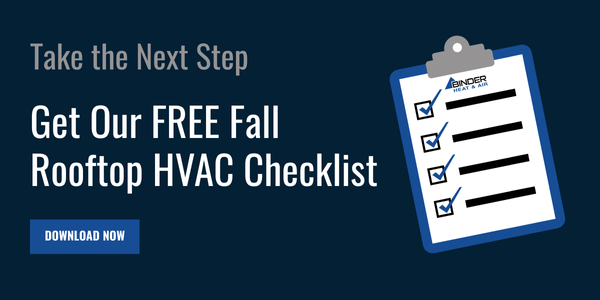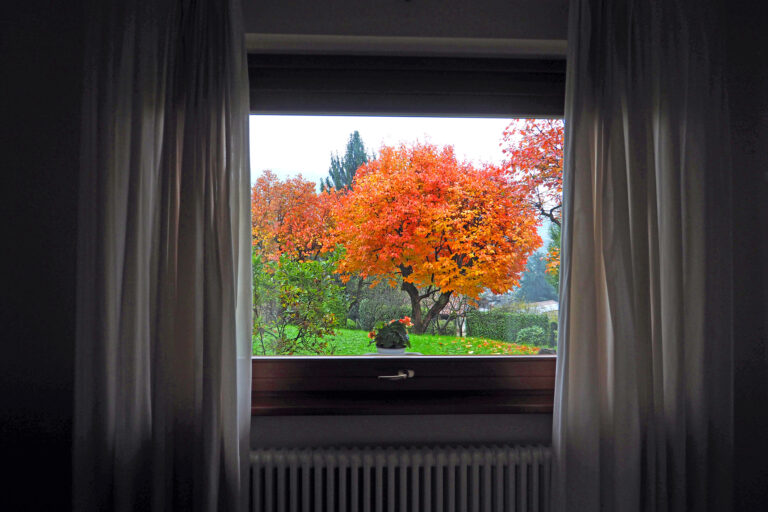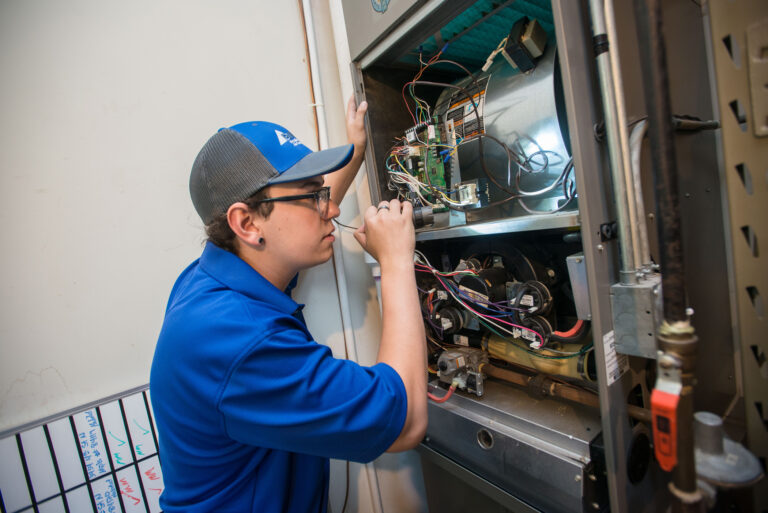For many small and medium-sized commercial buildings across the Twin Cities, the rooftop HVAC unit is the unsung hero of daily operations. Whether it’s keeping employees comfortable, protecting sensitive equipment, or ensuring customers have a positive experience inside your space, your rooftop system is working hard behind the scenes.
But, as every Minnesota facility manager knows, fall is a critical window for rooftop unit maintenance. Our weather shifts quickly from crisp autumn mornings to deep winter freezes, and without the right preparation, rooftop HVAC systems can fail when you need them most.
To help you avoid costly downtime and emergency calls, we’ve put together a practical fall rooftop HVAC inspection checklist—and we’re sharing the highlights here.
Why Fall Rooftop Unit Maintenance Matters
If you manage a commercial property, you know firsthand that HVAC issues are more than an inconvenience—they’re a business risk. A rooftop HVAC unit that breaks down in January doesn’t just impact comfort. It can disrupt operations, damage building systems, and create safety concerns.
Fall is an ideal season for commercial HVAC servicing because:
- Temperatures are moderate: This allows technicians to test heating and cooling performance without the extremes of summer or winter.
- Preventive care is proactive: You can address small issues like worn belts or clogged filters before they become major failures.
- Energy efficiency improves: A tuned-up system consumes less energy, reducing operating costs when heating demand ramps up.
- Safety and compliance are covered: Maintenance ensures your rooftop HVAC unit is operating safely and aligns with industry and insurance standards.
At Binder, we strongly recommend fall and spring rooftop HVAC inspections for every commercial customer. Together, these seasonal touchpoints provide year-round protection and extend the lifespan of your investment. Schedule your service today!
The Hidden Costs of Skipping Maintenance
Some facility managers put off rooftop unit maintenance, thinking they can save money. In reality, neglecting fall service often leads to:
- Higher energy bills: A poorly maintained system can consume up to 20% more energy.
- Unexpected downtime: Equipment failures in winter can halt business and damage tenant relationships.
- Shorter system lifespan: Rooftop HVAC units are a major capital investment, and regular care helps protect them.
- Bigger repair bills: Catching a worn belt is far less expensive than replacing a damaged blower motor.
Fall Rooftop HVAC Maintenance Checklist
Every rooftop unit is a little different, but here are the essential areas to focus on before Minnesota’s deep freeze sets in:
1. Inspect and Clean the Coils
Coils clogged with dirt, dust, or debris force your rooftop HVAC unit to work harder than it should. This reduces efficiency and increases the risk of freeze-ups once winter hits. A professional cleaning keeps airflow consistent and heat exchange efficient.
2. Check and Replace Belts
Belts are small but critical. A worn or loose belt can cause noisy operation, poor airflow, or even system shutdown. As part of our routine rooftop unit maintenance, our technicians carefully inspect belts for cracks or wear and replace them before they can fail.
3. Test the Economizer
An economizer allows your rooftop unit to bring in fresh outdoor air for “free cooling” when temperatures are mild. In Minnesota’s fall season, economizers should be calibrated and tested to ensure proper damper function, helping reduce energy costs.
4. Verify Electrical Components
Loose connections, worn contactors, and aging controls can all lead to breakdowns. During a fall rooftop HVAC inspection, Binder technicians check wiring, tighten connections, and replace components that show visible signs of stress.
5. Change Filters and Check Airflow
Clogged filters restrict airflow, reducing overall efficiency and indoor air quality. Fall is the perfect time to swap your filters and verify that airflow is balanced throughout your building.
6. Inspect Drain Pans and Lines
Standing water in pans or clogged drains can cause leaks and indoor water damage. Our skilled technicians clear the drain lines and confirm proper drainage to prevent winter headaches.
7. Test Heating Components
Your rooftop HVAC unit has likely been focused on cooling for the past few months. Fall maintenance ensures that burners, ignitors, and heat exchangers are clean and ready for reliable performance when temperatures drop.
We’ve covered the highlights of fall rooftop unit maintenance, but there’s more to it. To make it easy, we’ve created a downloadable Fall Rooftop HVAC Checklist for Minnesota Facilities.
This resource gives you:
- A clear, step-by-step guide for your facility team
- Insight into what a professional technician looks for during service
- Confidence that your rooftop HVAC unit is ready for winter
Why Partner With a Professional
While some tasks—like swapping filters—can be handled in-house, most items on this checklist require the expertise of a licensed commercial HVAC contractor. Binder’s team of union technicians doesn’t just perform the work—we provide peace of mind.
Here’s why facilities across the Twin Cities trust Binder:
- Expertise with rooftop systems: We specialize in commercial rooftop HVAC units and know what Minnesota weather puts them through.
- Custom service plans: Our service plans make it easy to stay ahead of maintenance without stretching your staff’s bandwidth.
- 24/7 emergency support: If something does go wrong, Binder is always a phone call away.
- Long-term cost savings: Preventive maintenance reduces repairs, extends system life, and ensures more predictable budgets.
By putting your trust in Binder this fall, you’re not just checking a box—you’re investing in uninterrupted comfort, efficiency, and safety for the year ahead. Schedule your commercial HVAC service today!
Binder’s Fall Rooftop HVAC Inspection
If your facility hasn’t scheduled fall service yet, now is the time. Binder offers comprehensive rooftop unit inspections designed specifically for Minnesota facilities.
Our technicians will:
- Perform a detailed review of coils, belts, economizers, electrical components, and heating systems
- Clean and calibrate critical parts for peak performance
- Provide a full report with recommendations for repairs or upgrades
- Work with you to plan ongoing maintenance for maximum ROI
Don’t wait until the first deep freeze to find out your rooftop system isn’t ready. Contact Binder today, and let’s keep your facility running smoothly.






